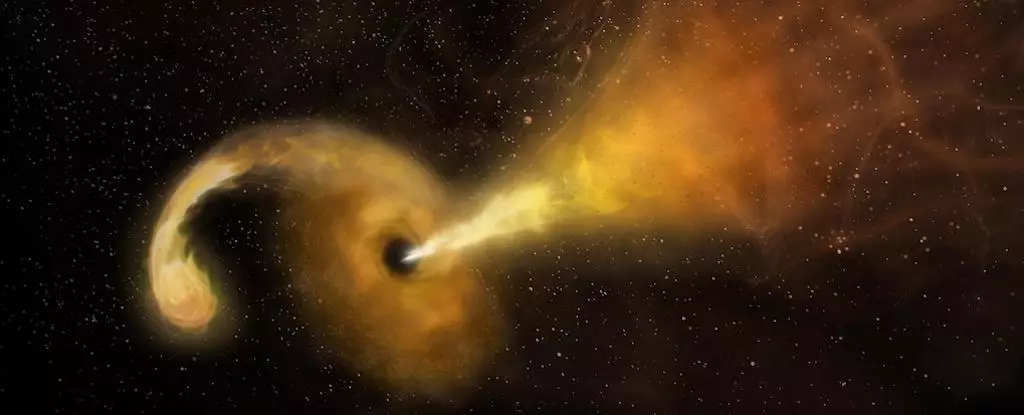A recent cosmic phenomenon identified as EP240408a has sent ripples through the astronomical community, presenting both intrigue and perplexity. Detected on April 8, 2024, by the Einstein Probe, an advanced X-ray space telescope, this event initially appeared to fit the mold of a typical gamma-ray burst (GRB). Yet, as researchers dove deeper into its characteristics, they unearthed a bewildering array of discrepancies that challenge established phenomena within astrophysics. The potential implications of this event could redefine our understanding of stellar explosions, provoking renewed interest in the ongoing quest to decipher the universe’s most enigmatic occurrences.
Upon initial observation, EP240408a exhibited behavior akin to a standard gamma-ray burst, a category well-known for emitting intense X-rays during brief but powerful flares. However, an expansive network of telescopes—covering diverse wavelengths from ultraviolet to radio—soon highlighted significant irregularities. The analysis indicates that what we have observed may not correspond to any known cosmic event. According to Brendan O’Connor, an astronomer at Carnegie Mellon University and principal investigator of the research, “The short duration and high luminosity are hard to explain in other scenarios.” This statement poses a critical question: Could we be witnessing a phenomenon yet unrecognized by modern science?
To grasp the significance of EP240408a, it’s essential to place it within the broader spectrum of transient cosmic occurrences. The universe displays a plethora of fleeting events, including supernovae and tidal disruption events (TDEs)—each offering invaluable insights into the violent processes of star and black hole interplay. Astronomers typically categorize these events based on their duration and the unique spectral signatures emitted during their lifetimes. However, EP240408a diverges from established classifications, prompting researchers to reconsider known astrophysical models.
For example, traditional gamma-ray bursts exhibit remarkably short lifespans, generally lasting hours, while EP240408a emitted a steady glow for several days. The extended duration complicates its classification, suggesting that we might be dealing with something fundamentally different. Moreover, astronomers have noted an absence of radio emissions typically observed in similar phenomena, leading them to hypothesize that they may have encountered a brand new type of event.
Following the initial exploration of EP240408a, researchers narrowed down potential explanations. One leading theory suggests that the explosion represents a tidal disruption event in which a black hole captures and disintegrates a white dwarf star. This scenario is characterized by the intense jets of material emitted from the accreting black hole. What makes this hypothesis particularly compelling is the possibility that the jet is oriented directly at Earth, allowing us unprecedented insight into this cosmic drama.
However, a key aspect of this theory raises questions: the detection should have produced identifiable radio emissions, which have yet to be recorded. The prevailing thought among astronomers is that the absence of radio signals may indicate that the event was captured too early in its cycle. Historical data suggest that it may take extended periods—ranging from hundreds to thousands of days—for these jets to decelerate sufficiently to produce radio waves detectable on Earth. Hence, the future may hold answers to whether these emissions will eventually be observed, fitting EP240408a neatly into the TDE narrative.
What adventurers of astronomy may ultimately glean from EP240408a extends far beyond mere celestial curiosity. Its properties may signify critical knowledge regarding black hole physics, star evolution, and the intricate dance that occurs in the cosmos. The looming prospect of discovering that we are witnessing a wholly new class of transient events remains tantalizing, emphasizing the importance of continuous observation and innovative technological applications in astrophysics.
As scientists gear up for further observations, both the focused study of EP240408a and the broader exploration of cosmic explosions will contribute to an evolving cosmic narrative. The unfolding observations may either corroborate existing theories or compel a radical rethinking of our understanding of the universe itself. Ultimately, EP240408a serves as a testament to the dynamic nature of astronomical inquiry, embodying the spirit of discovery that propels humanity toward a deeper comprehension of the cosmos. The enigma of this cosmic explosion may yet illuminate new pathways in our perpetual quest to decode the universe’s many mysteries.

